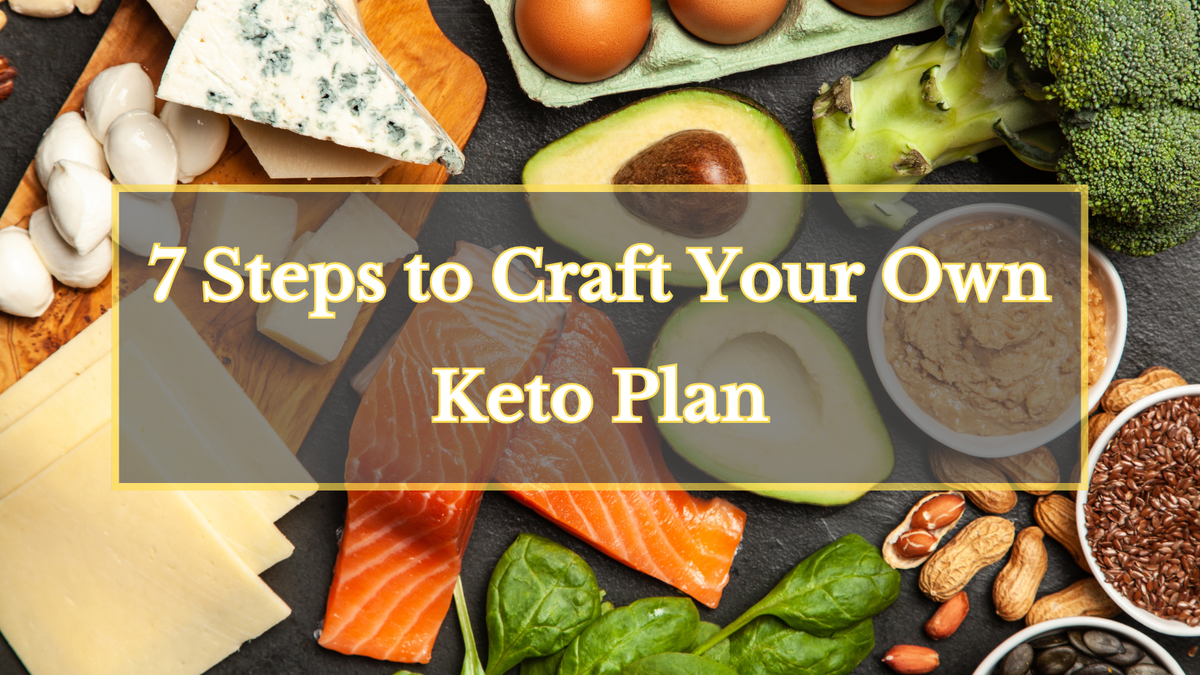7 Steps to Craft Your Own Keto Plan

Embarking on a ketogenic diet can feel like setting sail on uncharted waters.
It's a journey that promises not just weight loss but also a surge in energy and an overall enhancement in health.
However, crafting a personalized keto plan that resonates with your lifestyle and preferences can be the key to sustainable success.
This article will guide you through seven essential steps to create a keto plan that feels less like a diet and more like a delightful change towards better health.

Key Takeaways:
- Understand the basics of the ketogenic diet.
- Learn how to personalize your meal planning.
- Discover tips for maintaining your keto lifestyle long-term.
Step 1: Understand the Basics of Ketosis
Ketosis is the state your body enters when it begins to burn fat for fuel instead of carbohydrates.
Understanding this fundamental concept is crucial because it will guide your food choices and help you comprehend why certain foods are favored over others on this diet.
The ketogenic diet is high in fats, moderate in proteins, and very low in carbs.
Grasping the science behind ketosis can empower you to make informed decisions and keep you motivated.
Step 2: Calculate Your Macros

Every successful keto journey starts with numbers. 'Macros' or macronutrients refer to the fats, proteins, and carbohydrates that make up your daily caloric intake.
Using a keto calculator, determine how many grams of each you need based on your current weight, height, age, and activity level.
This personalized macro calculation is crucial to setting up a diet plan that can effectively induce ketosis while still meeting your body’s needs.
Step 3: Plan Your Meals
Once you know your macros, it's time to start meal planning.
This involves more than just choosing keto-friendly foods; it requires balancing these foods to meet your macro targets.
Start by listing foods you enjoy that fit the keto criteria and then use them to create a variety of meals that you can look forward to.
Tools like meal planning apps can be incredibly helpful here, allowing you to track your daily intake and stay on target.
Step 4: Stock Your Keto Pantry

A well-stocked pantry is your best defense against the temptation to stray from your keto goals.
Fill your pantry with keto staples such as high-quality fats (like avocado oil and coconut oil), nuts and seeds, canned goods like tuna and chicken, and plenty of spices to keep your meals interesting.
Having these items readily available makes it easier to whip up keto-friendly meals even on your busiest days.
Step 5: Prepare for Keto Flu
The initial transition to a ketogenic diet can be tough.
The so-called 'keto flu'—a temporary collection of symptoms such as fatigue, headaches, and irritability—occurs as your body adjusts.
Prepare for this phase by staying hydrated, replenishing electrolytes with foods like bone broth or electrolyte supplements, and getting plenty of sleep.
Understanding that this is a temporary phase can help you push through to the other side.
Step 6: Monitor and Adjust

As you settle into your keto lifestyle, continuous monitoring is key. Keep an eye on your body’s responses.
Are you feeling energized and satisfied, or are you often hungry and fatigued? Use a food diary or an app to track your food intake and symptoms to help pinpoint any necessary adjustments.
Flexibility to tweak your plan based on your ongoing experiences is crucial for long-term adherence and success.
Step 7: Embrace the Keto Community
You're not alone on this journey.
The keto community is vast and incredibly supportive.
From forums and social media groups to local meet-ups, connecting with others who are also living a ketogenic lifestyle can provide you with inspiration, motivation, and a wealth of shared knowledge.
Sharing your challenges and successes can make your journey smoother and more enjoyable.

Summary
Creating a personalized keto plan involves understanding the basics of ketosis, calculating your macros, planning your meals, stocking up on essentials, preparing for the keto flu, monitoring your progress, and engaging with the community.
By following these steps, you can tailor a ketogenic lifestyle that fits your personal preferences and goals, leading to better health and well-being.
FAQs
How long does it take to enter ketosis?
Typically, it takes 2-4 days to enter ketosis if you restrict your carbohydrate intake to approximately 20-50 grams per day and follow your calculated fat and protein intake.
Can I ever eat carbs again on a keto diet?
While the ketogenic diet is low in carbs, you can incorporate small amounts of low-glycemic carbohydrates once you are adapted and depending on your body's response and your ongoing goals.
Is the keto diet safe for everyone?
While many people benefit from the keto diet, it's not suitable for everyone. Individuals with certain health conditions or those who are pregnant or breastfeeding should consult with healthcare professionals before starting a ketogenic diet.


